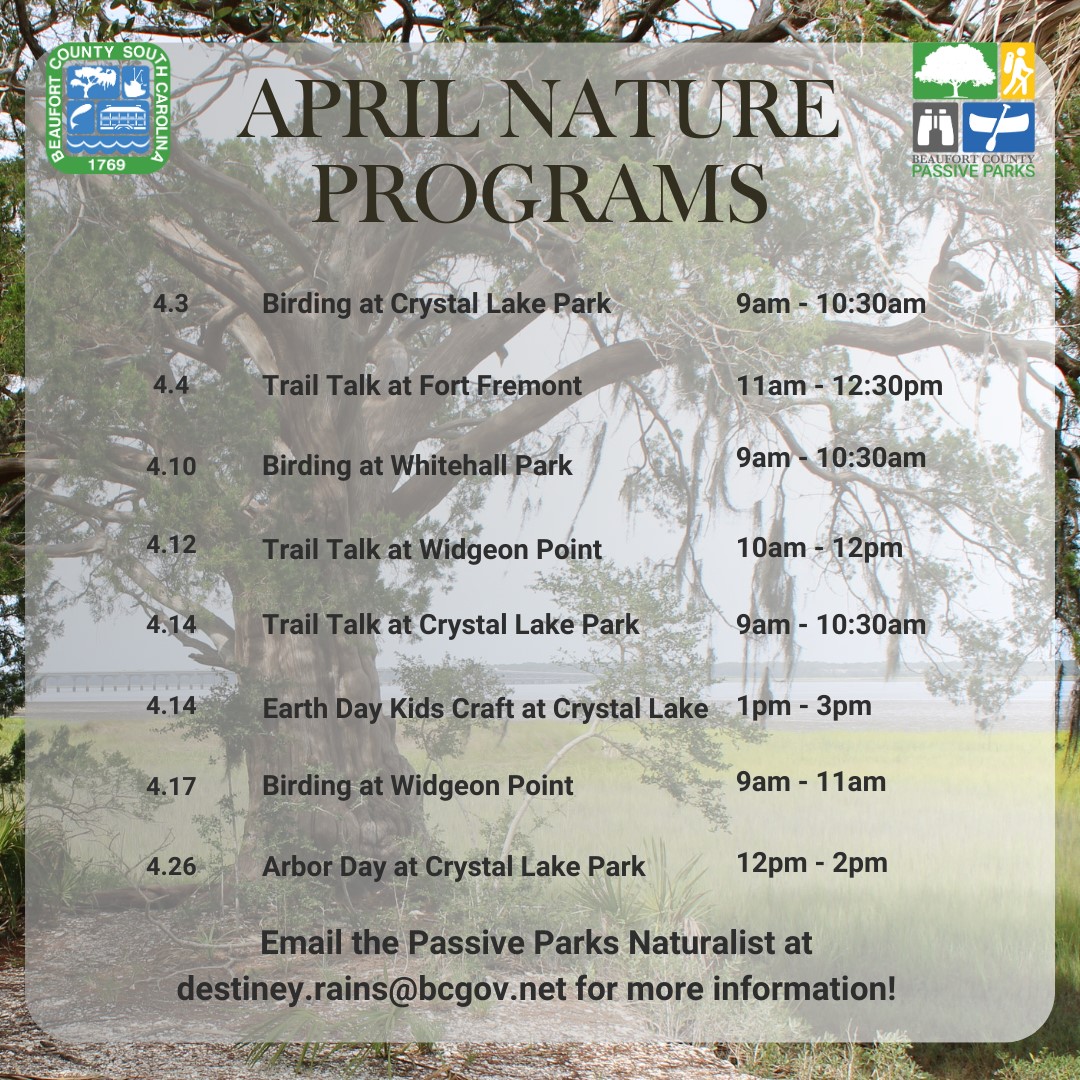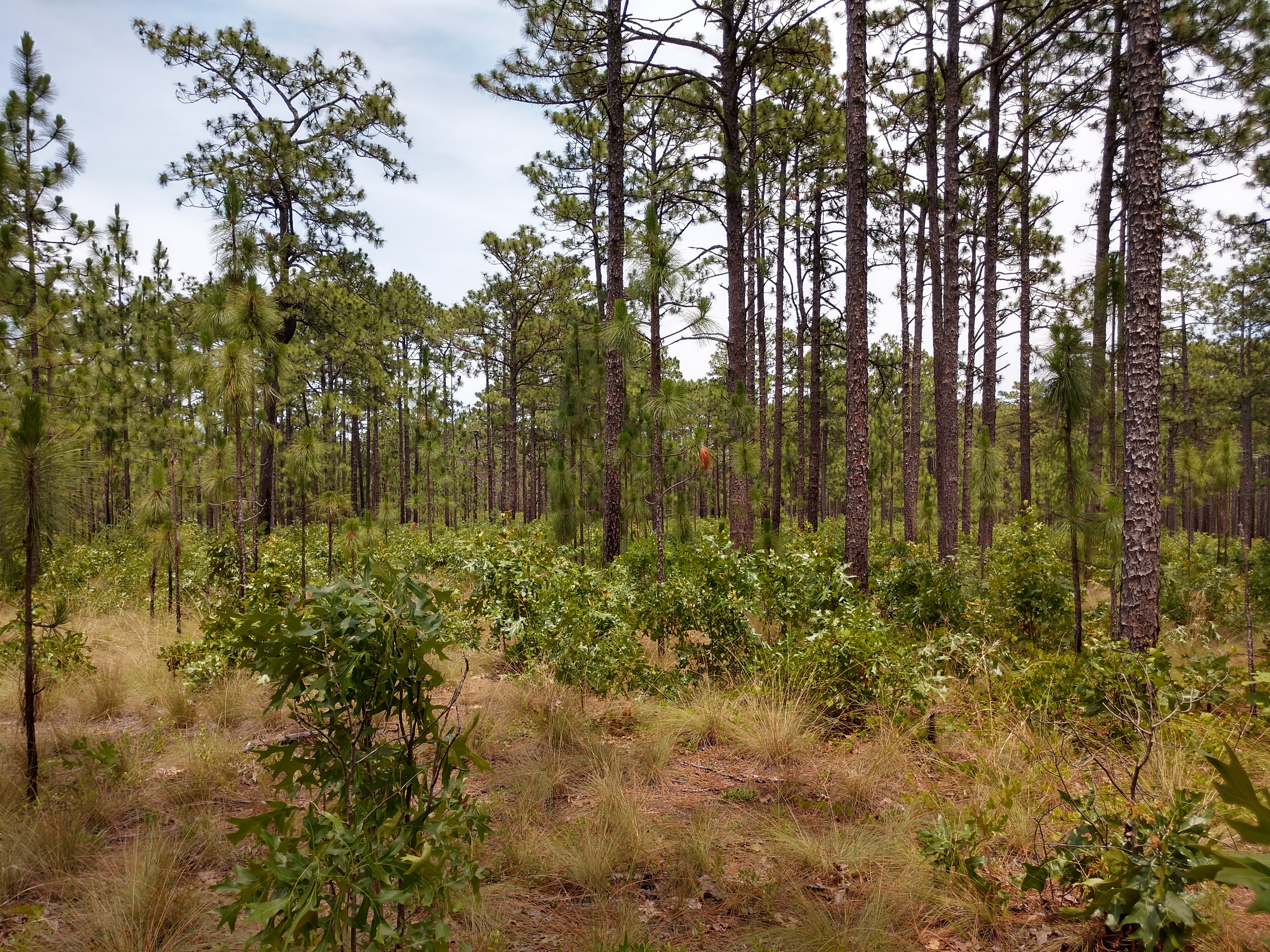Programs
Environmental Education Programming
The Passive Parks Department is excited to announce new, and FREE, environmental education programming by our Naturalist, Destiney Rains! To stay in the know with program scheduling, fun facts, and park updates, sign up for the "Passive Parks" email list by clicking here.

Prior to coming to Beaufort County, Destiney earned a Bachelor's Degree from USC-Beaufort and gained professional experience as an environmental educator with the Coastal Discovery Museum and Kiawah Island. Destiney is also a certified Lowcountry Master Naturalist. She is continually designing exciting and informative environmental education programming for Beaufort County residents and visitors.
Program offerings include types such as trail talks, fish clinics, birding hikes, saltmarsh meanderings, herpetology clinics, and pollinator talks. Progams are offered on the County passive park properties, as well as in school classrooms and for private communities.
More information about the Passive Parks Department Environmental Education Program can be downloaded by clicking here.
Please check back regularly for advertised programming, or email Destiney for your programming request at destiney.rains@bcgov.net.
Land Management
Proper stewardship of the natural resources on passive park properties is fundamental to the protection of the conservation values and ecosystem health of the flora and fauna, as well as the health and safety of the human communities surrounding these properties. Stewardship is a broader and more comprehensive type of property management than basic maintenance and involves managing property resources through various land management activities. These activities may include habitat restoration through timber harvest and reforestation, mechanical and/or chemical vegetation management, prescribed burning, invasive exotic species control, and native species management.
Habitat Restoration
Prior to European settlement, longleaf pine forests covered as much as 90 million acres throughout the southeast from Virginia to Florida and west to Texas. Longleaf pine forests have a rich biodiversity of understory plant species and rare and endangered wildlife species, such as fox squirrels, gopher tortoises, indigo snakes and red-cockaded woodpeckers. Habitat dynamics that provide the opportunity for such a diverse natural community include frequent but low intensity fires, an open overstory canopy and nutritious pine-nut food sources. These historic forests were clearcut as settlers occupied the region due to the value of the longleaf pine heartwood for construction purposes, and then were replanted with faster growing pine species, such as slash and loblolly pines, for continued timber production. Today, longleaf pine has been lost in 95% of its historic range and only small patches of these forests are found. Various federal, state, and non-profit organizations encourage and provide incentives for landowners to replant longleaf pine, when possible, to restore this once thriving and important forest type.
Five passive park properties have been identified for habitat restoration in the approved 2020 Forest Management Plan. Habitat restoration on these properties include a mix of thinning planted slash pine plantations, clearcutting planted loblolly plantations, and replanting clearcut areas with longleaf pine. Additional future land management activities that will take place may include chemical and mechanical vegetation management, prescribed burning and invasive exotic species control. The five identified properties include:
- Evergreen Tract (Hwy 170 and Davis Road) – clearcut and replant with longleaf pine
- Garvey Hall Tract (Hwy 46) – clearcut and replant with longleaf pine
- Manigault Neck Tract (Hwy 170 and Callawasee Road) – thinning
- Cherry Point Tract (Hwy 170 and Pritcher Point Road) – thinning
- Pinckney Point Tract (Pinckney Colony Road) - thinning
